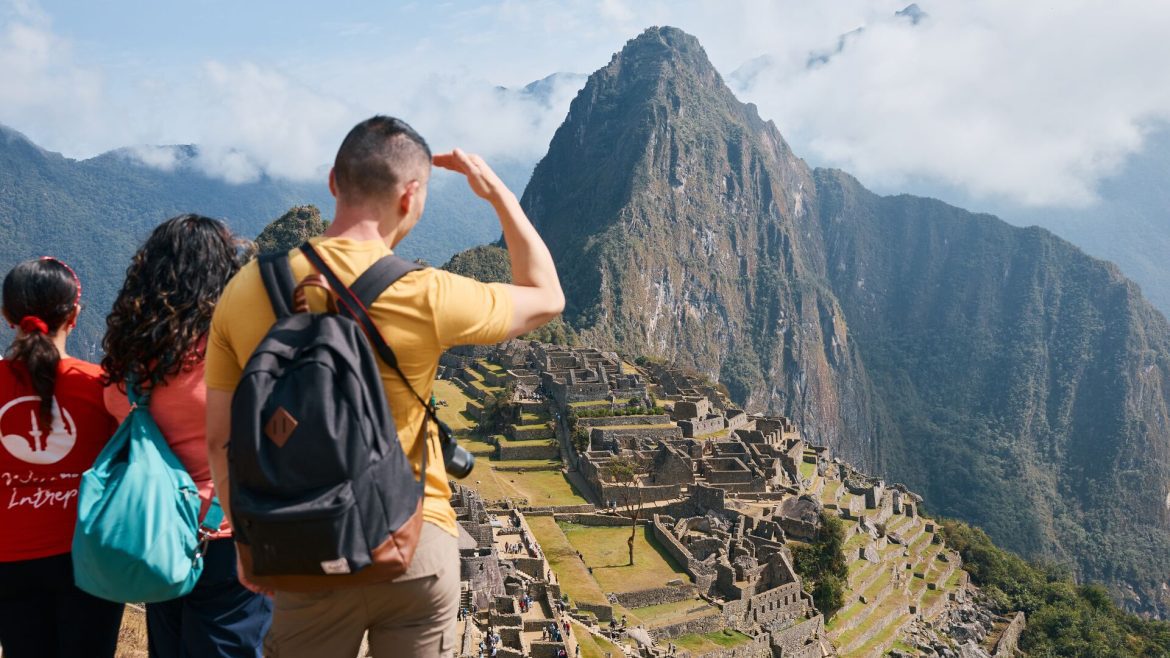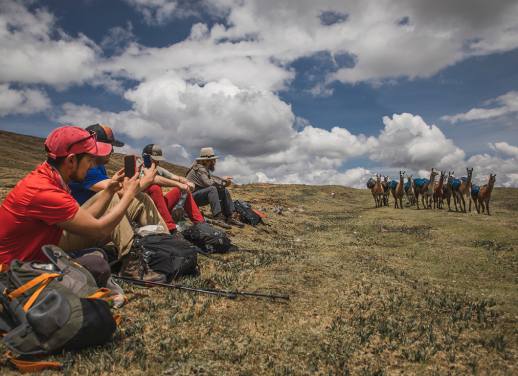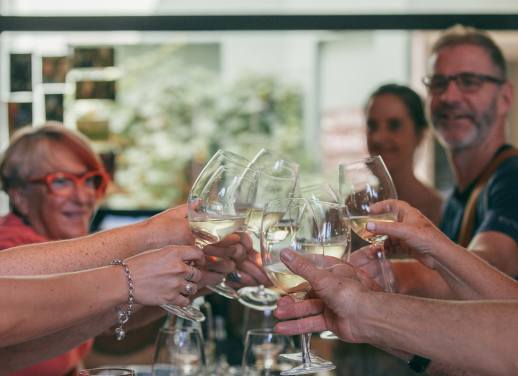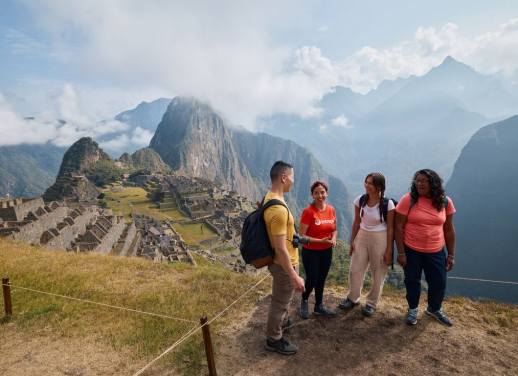Lucho Gonzales has been to Machu Picchu about 400 times. He thinks. He hasn’t kept an official tally, but based on how long he’s been a tour guide and how often he leads trips to the site, that’s a pretty good estimate.
Surely it gets old, I prompt. No, he tells me. It really doesn’t.
‘It has something energetic, spiritual,’ he says. ‘I can feel that.’
My Intrepid trip in Peru had just kicked off, and while Machu Picchu had never been on the top of my to-do list, it was, of course, part of our ten-day itinerary. You can’t not go, right? To get there, we headed off on a journey into the Andes and through the Sacred Valley.
Just like pachamama used to make
Our landing at Cusco airport felt hard, and I wondered if it was because we landed 100 times higher than we took off in Lima, like the plane was surprised to be back on the ground so soon. We took to the high-altitude streets of Cusco on foot and soon puffed into Nuna Raymi, a second-storey restaurant just off Plaza de Armas, for lunch.
Rocio Zuñiga, the restaurant’s owner, greeted us and explained that the meal we were about to enjoy would take us on a tour through native and ancient Andean ingredients. Nuna Raymi is committed to supporting local farmers throughout the Andes, who face threats of climate change and urbanisation, while protecting native foods at risk of extinction. She brought out dish after delicious dish of modern spins on Peruvian staples like potatoes, corn, chilis and a baked, marinated trout that we didn’t stop talking about for days.
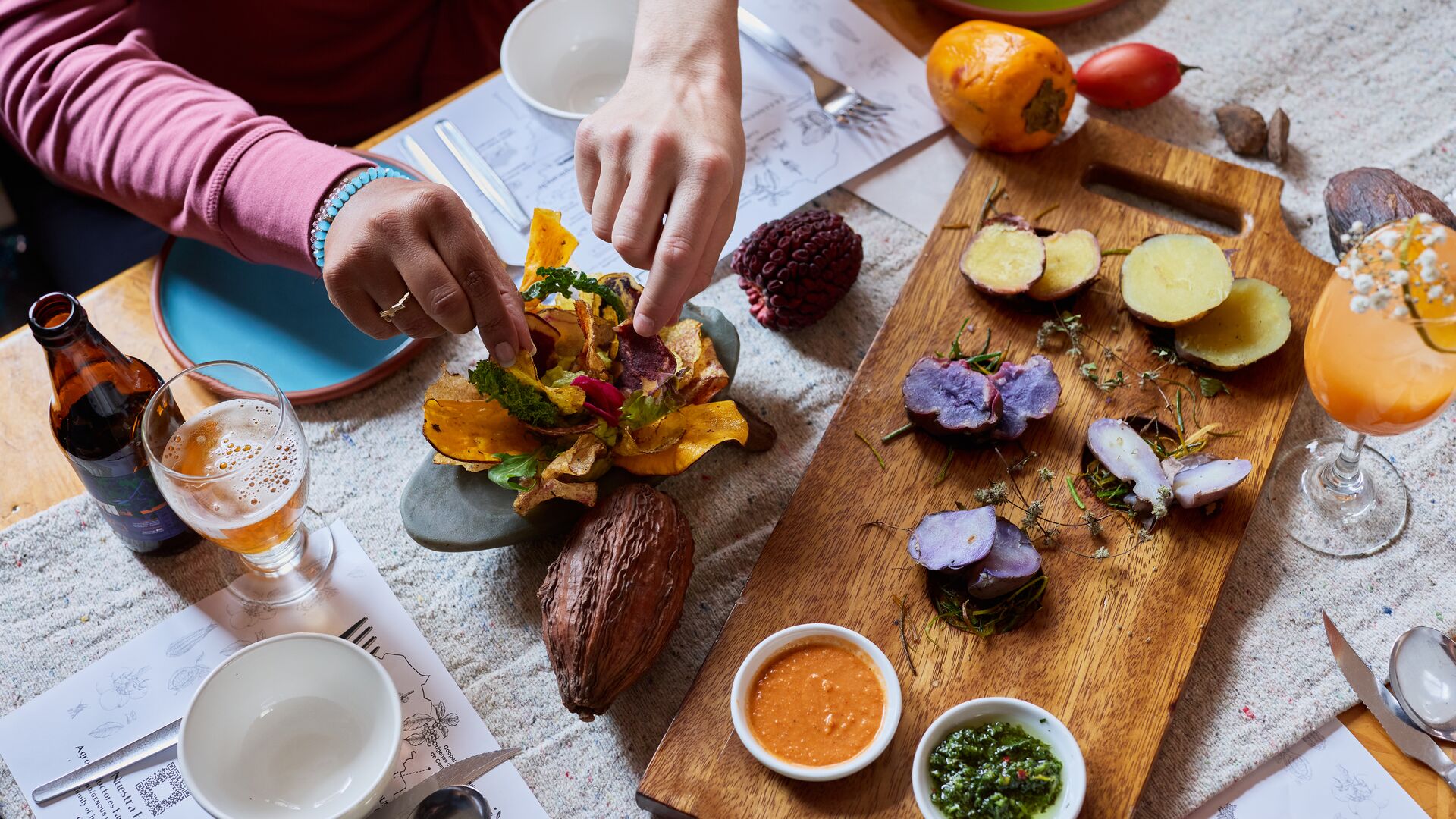
The next day we headed deeper into the Sacred Valley and pulled up outside the gates of AMA Restaurant in Urubamba, a small town at the foot of Cichón mountain along the Urubamba River.
We strolled through the gate to a little café and shop behind a covered garden patio. To the left, a children’s wooden play structure stood in a grassy yard. A group of women wearing AMA caps sat knitting at some of the tables, a pair of young girls playing and chattering among them.
Julio Chemi Sanchez Hernandez, the owner and founder of AMA Restaurant, met us on the porch with hot cocoa and fresh-baked chocolate brownies. As we dug in, he explained how he created AMA as a way to provide employment opportunities for single mums in the Sacred Valley. It’s difficult – if not impossible – for single mums to work while caring for their kids, so he opened a restaurant and a shop to employ women as cooks, servers and crafters in a space that also allowed them to bring their kids.
‘I started seven years ago and the children who started at ten years old now have 17, 18,’ Julio shares. ‘And all the ladies in the kitchen and in the communities did not have the opportunity to go to university. And this new generation is going to university… This generational change is powerful. It’s huge.’


Lupita Castro Arias (you can call her Lupe) has been working with Julio for five years. She had worked in various restaurants and hotels, but when she and her son’s father separated when he was seven years old, Lupe had to rely on her ageing mother for childcare in order to work and earn an income for herself. Today, Lupe is the head chef at AMA and her son, Jean Piero, is 17 years old and heading off to university soon.
‘This generational change is powerful. It’s huge.’
‘I have spent the past five years with my son,’ she tells me. While his mum worked, Jean Piero used the space at AMA to do his homework, have some food, play and build a community with other kids.
I ask her how she thinks Jean Piero feels about seeing his mum work and support him in this way.
‘Feliz,’ she replies with a pause, and her eyes say so much more.
Weaving through the Sacred Valley
The next morning, we drove up the switchbacked hillsides outside Ollantaytambo to the Quechua community of Huilloc where a collective of women and children greeted us with song, dance and a necklace made of cantua, Peru’s national flower. These women represent 15 families from the community who have banded together as one of the tourism associations that have been established to give families, especially mums, additional income opportunities as the men typically head into Ollantaytambo in the valley to work as porters for the many Inca Trail trekking outfits that operate year-round.
The associations partner with tour operators like Intrepid to welcome travellers into their communities to learn about Andean culture and the women’s work as weavers and farmers.
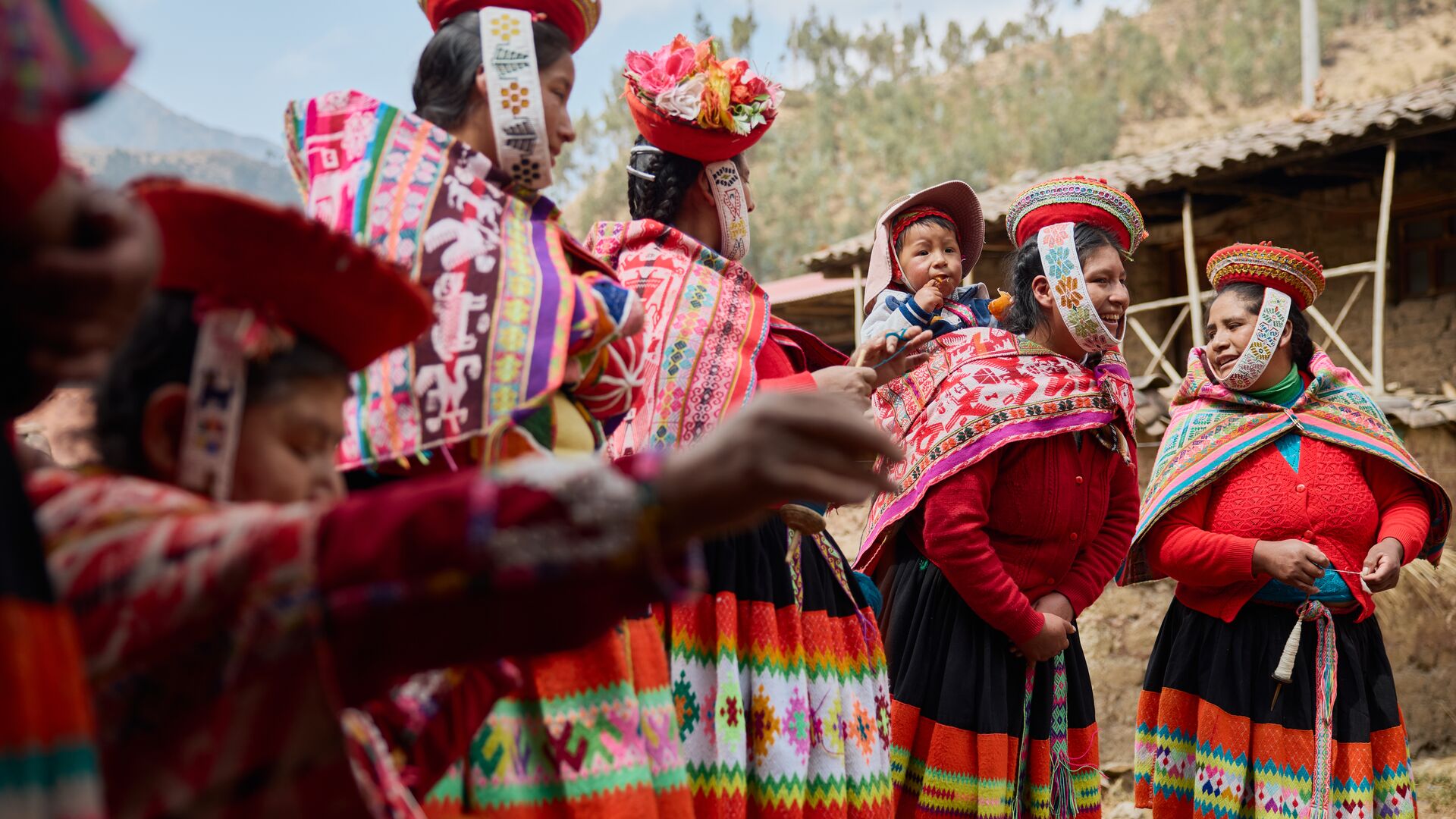
Lunch was already cooking, a pachamanca – or underground oven – heaped with coals and topped with a pair of slow-roasting guinea pigs, as the women introduced themselves – their name, their age, how many kids they had. Our group did the same in return, our name, our age, where we were from. Many of us older than them, remarkably fewer kids between us. They demonstrated their weaving work and explained how they collect, clean and prepare sheep and alpaca wool before dyeing it with natural ingredients and weaving it into the colourful skirts, mantas and monteras they wore and the many textile products they’d later lay out for us to browse and buy, if we wanted.
With the help of a translator, I spoke with Claudia Quispe Medina, a 24-year-old mother of two who has been part of the association for two years. Her mum taught her how to knit when she was eight years old. She describes how, since joining the association, she’s been able to contribute financially to her family and sell her work to visitors from all over the world.
‘That makes me really happy,’ she says with a smile.
That afternoon, with a small purple pouch I bought from Claudia tucked into my backpack, we hopped aboard the Machu Picchu Train and rode deeper and lower into the valley until the landscapes morphed from arid and beige to tropical and green. We arrived in Aguas Calientes in the dark and traipsed our way to our hotel through streets filled with open-air bars and thumping music. It felt more like Koh Pha Ngan during a full moon than the communities we’d travelled through during the past few days.


Beyond the birds-eye view
Early the next morning, we joined a queue snaking down the sloped main street where a conveyor belt of coaches swallowed up tourists and took us up the lush mountainside to the gates of Machu Picchu.
At 7:45 am, in our ticketed time slot, we shuffled through the gates and along the marked trail to the second viewpoint, and there it was – well, mostly. Clouds still draped themselves over the mountaintop, and a haze of stone structures appeared and disappeared in pockets as the air shifted.
Lucho knew the clouds would lift. They don’t always, but given the time of year, the weather forecast and, well, having been there hundreds of times before, he knew they would. Sure enough, by 9 am, the clouds dissolved into a bright blue sky. It was the classic photo you’ve seen before.



And yes, there was jostling to get into the perfect selfie spot, and I have far too many identical shots on my phone, but what you don’t get in any of them is everything around the iconic birds-eye view of the site. The height of the mountains it sits on top of, the depth and texture of the surrounding peaks, the wisps of energy from the stone that was painstakingly placed there 600 years ago and then sat wrapped in forest and clouds for 500 years.
It’s as close as Quechuan gets to saying goodbye, translating roughly to, as Lucho puts it, ‘See you here or in the next life but pretty sure we’ll see you again.’
We wove in a procession through the ruins, past the alpacas and, three hours after entering the site, we made our way through the exit (not through the gift shop, but there is one if you need it). As the herds of tourists plodded out, every guide (and every visitor must enter with a guide) turned back towards the view and exclaimed, ‘Tupananchiskama!’ with a wave or a pat to their heart.
It’s as close as Quechuan gets to saying goodbye, translating roughly to, as Lucho puts it, ‘See you here or in the next life but pretty sure we’ll see you again.’ The tourists stopped, almost startled, and turned, joining in, like they’d been caught trying to pull off an Irish goodbye. ‘Yes, of course, of course, tupananchiskama!’
Back down the mountain we went in a cavalcade of tourist coaches to the train station in Aguas Calientes, on the train along Urubamba River to Ollantaytambo, onto our private minibus that took us eastwards up the Sacred Valley and on our way back to Cusco.
Falling in love with Peru
After passing back through Urubamba, we pulled off the road at an empty lookout over the town and its river as the sunset lit the distant snow-capped peaks with fiery crowns. Lucho pointed out where AMA sat in the heart of the town where Julio, Lupe and the mamas were probably closing the kitchen up for the night. A little farther beyond, high in the mountains in Huilloc, Claudia may have been tending to her children and preparing dinner. Farther still into the jungled mountains above Aguas Calientes, the last of the tourists and guides were trickling out of Machu Picchu, waving tupananchiskama as the same sun that cleared the clouds for us that morning sank below the peaks yet again.
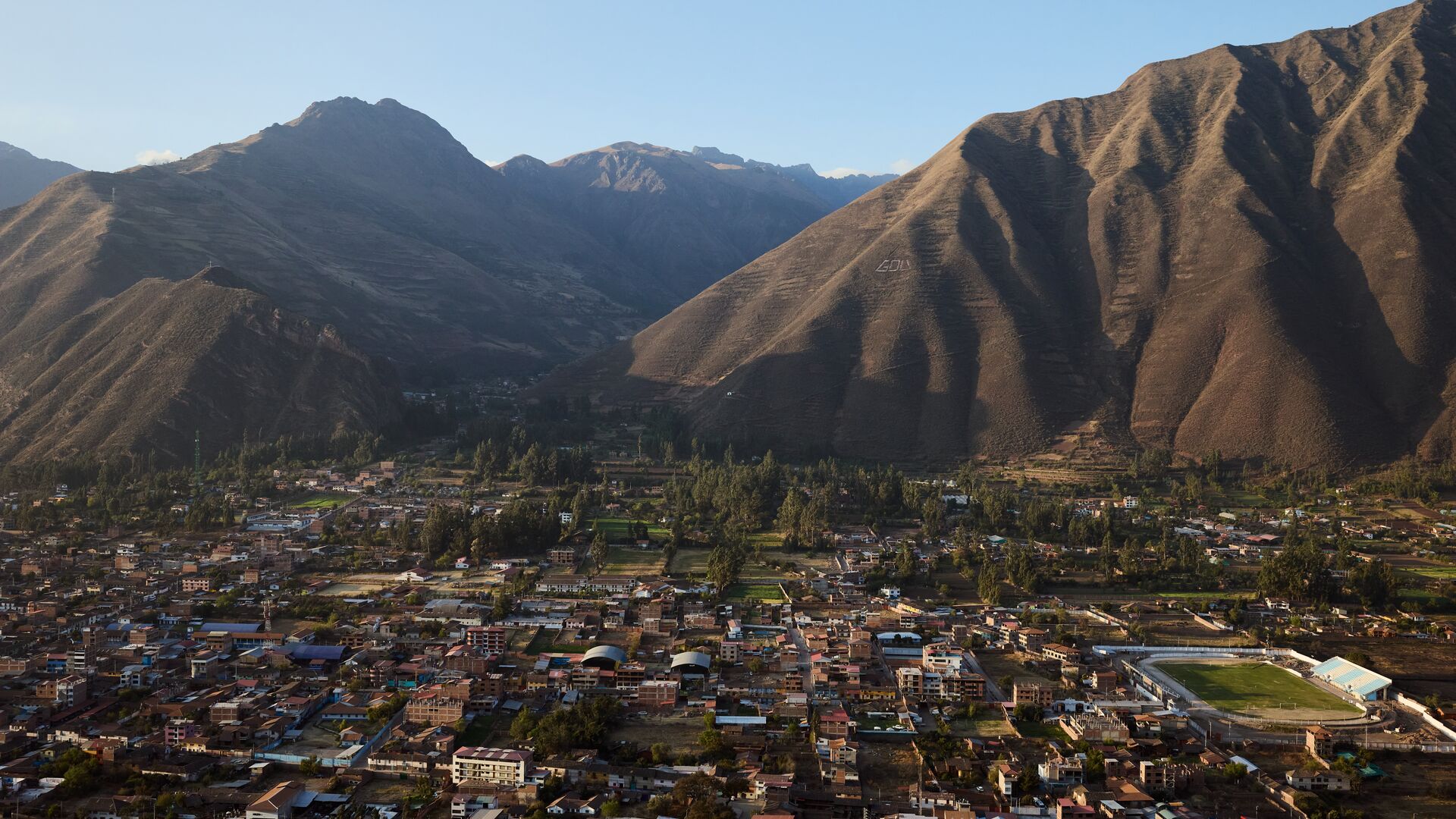
Back in the van, we watched the sunset smoulder into darkness, and a quiet fell over us. Maybe it was the length of time I’d been with these people. Maybe it was an accumulation of appreciation for the people who call this place home, having met them, spent time with them and heard their stories. Whatever it was, our Machu Picchu day was the day I fell in love with Peru.
I have some stunner photos of Machu Picchu, but what makes them mean something is everything else that made my visit there what it was, which started days before we stood above it and took in the view. Machu Picchu stands as a monument to what was, what could’ve been, what’s at risk of being lost and what still is. I saw that there, but I felt it in the communities we visited, the Quechua language and traditions that live on, the shared and persistent recognition of what makes this valley so sacred.
Lucho was right. It has something energetic, spiritual about it. I could feel that.
Heather travelled on version of the Inca Trail & Amazon Adventure. Find your own way to Machu Picchu with Intrepid.

